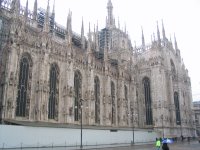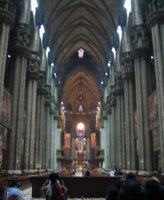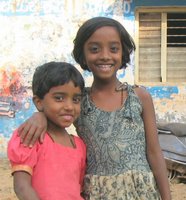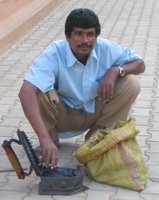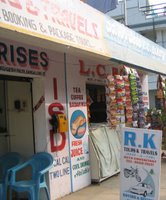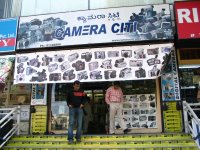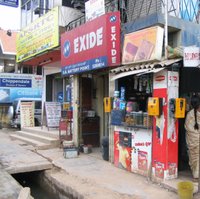 Venice
VeniceAh…Venice. Venice is a truly unique city. Yes, the canals romantically meander through the lagoon islands and the winding, narrow streets are simply charming. But the city is also a history treasure trove. Venice’s many buildings function as remarkable time capsules, sharing with us 21st century travelers, distant echoes of when Venice was a wealthy, major maritime trading center with the east. More remarkably for us, much of the wealth that created the splendor of the Doge Palace or the golden opulence of the Basilica of San Marco came from the very place we now call home …India. Maybe the world’s been flat longer than we thought.
Venice, however, is first for lovers.


We stayed at a delightful hotel called Locanda Ca’ Del Brocchi on the lagoon island of Dorsoduro. Our innkeeper, Nicola, always referred to the accommodations as “my hotel.” He provided us the care and comfort one can only get from an innkeeper with a personal attachment to the premises.
 Our location positioned us for a short water taxi ride to San Marco or the option for a hand-in-hand stroll over the footbridge at Academia to San Marco. Frequently, we opted to stroll our way to whatever destination took our fancy. On our first afternoon in Venice we were greeted by an older gondolier who invited us to go for a ride along the waterways in his gondola. Now, how could we refuse?
Our location positioned us for a short water taxi ride to San Marco or the option for a hand-in-hand stroll over the footbridge at Academia to San Marco. Frequently, we opted to stroll our way to whatever destination took our fancy. On our first afternoon in Venice we were greeted by an older gondolier who invited us to go for a ride along the waterways in his gondola. Now, how could we refuse?
We toured the Basilica San Marco. The current basilica is the result of
 many re-buildings and re-modeling efforts. One cannot avoid being struck by the eastern style mosaic artwork that adorns the ceiling of the church, much of it done in gold. We were very fortunate that our visit to the basilica allowed us to see the inside of the church by early morning natural sunlight, illumination from the internal lighting system which is turned on for only one hour each day, and finally, filled with the bright
many re-buildings and re-modeling efforts. One cannot avoid being struck by the eastern style mosaic artwork that adorns the ceiling of the church, much of it done in gold. We were very fortunate that our visit to the basilica allowed us to see the inside of the church by early morning natural sunlight, illumination from the internal lighting system which is turned on for only one hour each day, and finally, filled with the bright  rays of the midday sun. Each lighting experience provided us a new view of this overwhelmingly beautiful structure. We also visited the Treasury, the upper loge and the Pala d’Oro inside the basilica. Each time we gladly paid the required 3 – 5 Euros for an admission ticket.
rays of the midday sun. Each lighting experience provided us a new view of this overwhelmingly beautiful structure. We also visited the Treasury, the upper loge and the Pala d’Oro inside the basilica. Each time we gladly paid the required 3 – 5 Euros for an admission ticket. Another discovery in our wanderings was the scheduled performance of Antonio Vivaldi’s Four Seasons that evening. Tickets were purchased. Vivaldi was born in Venice in 1678. Comfortably seated in a building with a cornerstone laid in 1487, we listened in awe as seven women musicians (four violins, a cello, a base and harpsichord) dressed in period costume transported us in time and enraptured us with beautiful music.
Another discovery in our wanderings was the scheduled performance of Antonio Vivaldi’s Four Seasons that evening. Tickets were purchased. Vivaldi was born in Venice in 1678. Comfortably seated in a building with a cornerstone laid in 1487, we listened in awe as seven women musicians (four violins, a cello, a base and harpsichord) dressed in period costume transported us in time and enraptured us with beautiful music. Our plan to depart early the next day from Venice to Rome was foiled by sold out train bookings. Rats…another day in Venice. W
Our plan to depart early the next day from Venice to Rome was foiled by sold out train bookings. Rats…another day in Venice. W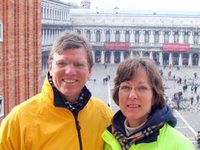 e visited the Doge Palace. Vacations can be filled with such wonderful surprises. Ah, Venice…a place for lovers.
e visited the Doge Palace. Vacations can be filled with such wonderful surprises. Ah, Venice…a place for lovers.


